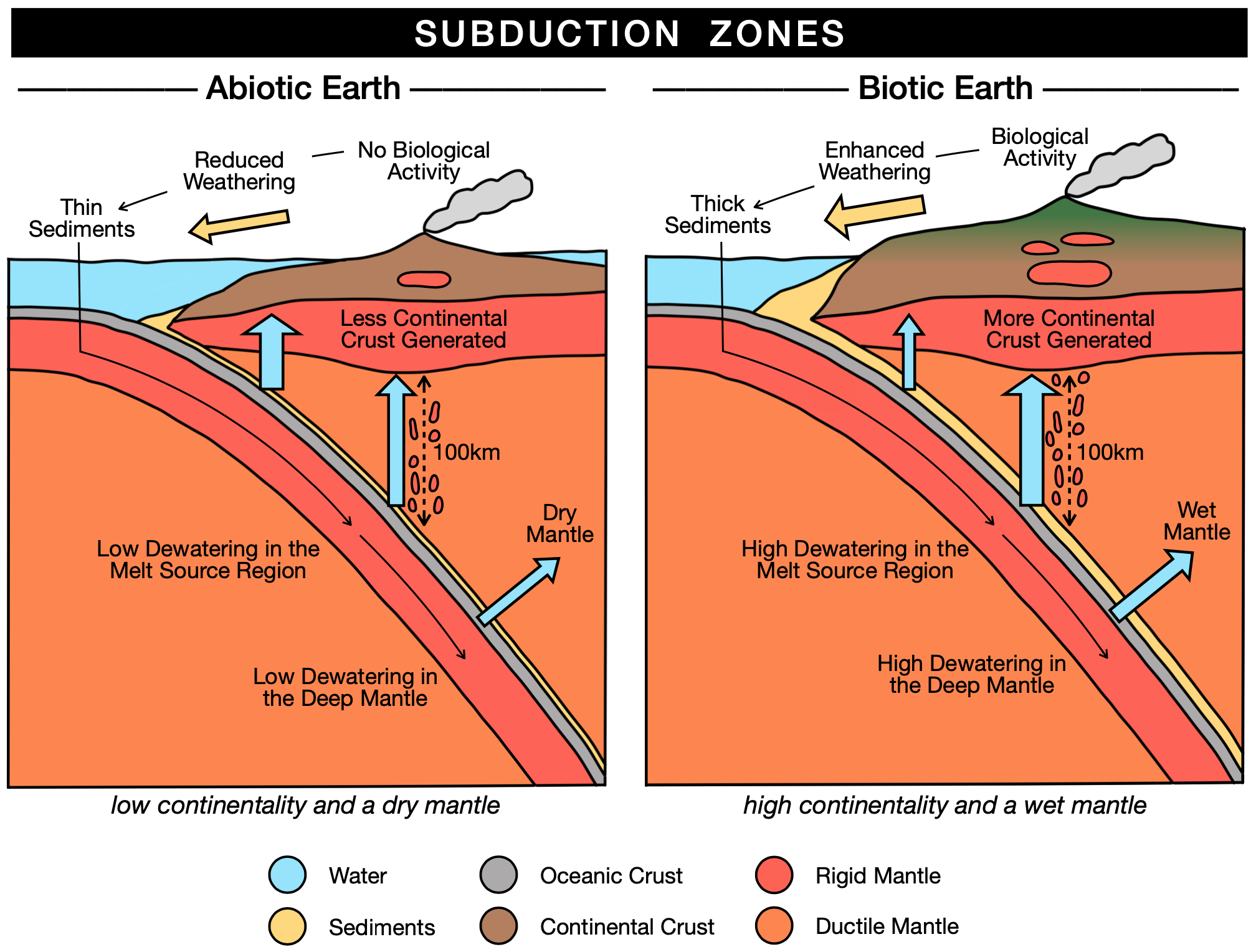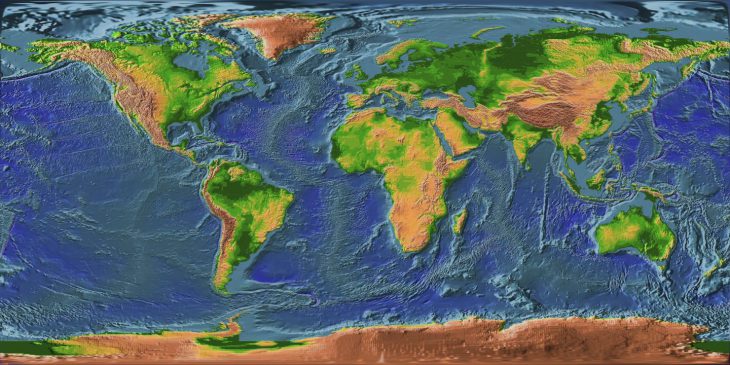Life has had an important role in shaping the Earth’s surface, but recent studies have suggested that biological activity may have had an even deeper impact on the planet’s evolution. The mantle is the layer of Earth below the crust, about 255 miles below the surface. The mantle contributes to how the continents move on the surface.
Several authors propose a connection between life, mantle chemistry, and the presence of continental crust, noting that the first continents appeared at a similar time to when life first originated. Today, continental crust covers 40% of the Earth’s surface, so the amount of land has increased over time. According to new research, life may have actually had something to do with this.
In order to explore how life can change the continents, we must first look to subduction zones, where continental crust is generated. Subduction zones are colliding plate boundaries where a dense down-going plate sinks under a buoyant overriding plate. The down-going plate is oceanic crust, and it contains minerals with water locked into their structures. When the down-going plate reaches depths of 100 km, these minerals undergo a series of chemical reactions and release this water into the mantle. Subsequently, mantle chemistry is altered and buoyant melts are generated, leading to the production of continental crust. Mantle water is therefore critical to the generation of continents.
There is another important component which contributes to the mantle’s water content: water-rich sediments in ocean trenches, which are dragged into the mantle during subduction and release their water as they travel down. Sediments dewater differently from oceanic crust in the mantle; like on a conveyor belt, they can dewater at shallow levels, at depths of 100 km along with the oceanic crust, or at deeper levels. Shallow dewatering does not contribute to the generation of continental crust. Dewatering at 100 km results in increased melt generation and increased continentality. Dewatering at even greater depths enriches the mantle with water, making it ‘wetter’.

Subduction Zones. Image by Dee Cirium.
There is a well established relationship between life and sedimentation. Land plants and fungi increase continental weathering, leading to more sediment generation and deposition into ocean trenches. If there is abundant life, weathering will be enhanced and much thicker sediments will be deposited and subducted. If there is no life, weathering will be greatly reduced, and less sediment will be deposited and subducted. As thicker sediments hold more water, the presence of life can lead to increased mantle water contents.
In this study, the authors use the life-sedimentation relationship as a base assumption. They then model mantle water contents at subduction zones and how these vary when life is or is not present. To determine how life has affected continentality and mantle chemistry, a series of equations are used to establish relationships between sedimentation, continent formation, and mantle chemistry. The model shows that systems evolve to one of two stable scenarios: a biotic Earth with high continentality and a wet mantle or an abiotic Earth with low continentality and a dry mantle.
In the biotic Earth scenario a thick sedimentary layer is assumed. Thick sediments carry more water and so increase mantle water contents, but where they release water also matters. Thicker sediments lose a greater proportion of their waters at depth, which is better for continent generation than shallow dewatering. Subsequently, continentality is increased further. Continued dewatering at and beyond depths of 100 km will also change mantle chemistry to more water-rich compositions over time, as not all the water is used up to generate magmas. This is important because a wet mantle helps to stabilize plate tectonics. The biotic Earth scenario is what we observe on Earth today: high continentality, a wet mantle and stable plate tectonics.
In the abiotic Earth scenario a thin sedimentary layer is assumed. Thin sediments carry less water, and so do not increase mantle water contents as much. Additionally, they lose a greater proportion of their water at shallower levels, which is worse for continent generation. The result is a dry mantle and low continentality, possibly without plate tectonics. It is possible that the early Earth was like this, before it evolved life. This is also what we expect if Earth never evolved life.
The model generated in the study is very robust even when uncertain parameters are varied: systems still evolve to a high continentality/wet mantle endmember or a low continentality/dry mantle endmember. This suggests that biologically enhanced sedimentation is extremely important in the formation of continents. Subsequently this has exciting implications in the search for life, as it suggests continentality on other planets is a strong indicator of biological processes there.


